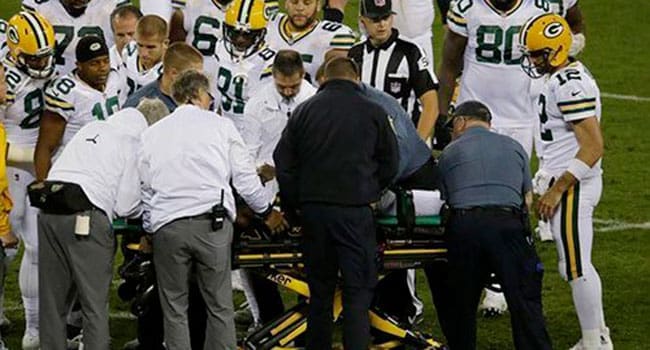 The news that the National Football League’s TV ratings are dropping – down 11 percent from the previous season – has been greeted with all sorts of interpretations.
The news that the National Football League’s TV ratings are dropping – down 11 percent from the previous season – has been greeted with all sorts of interpretations.
Many attribute the drop to the recent spate of social justice protests by players and some coaches in the NFL. A lot of people (68 percent in one poll) don’t want Black Lives Matter when they tune in for football. Politics has reared its ugly head in the NFL and is turning some off the sport.
That seems the trendy answer.
The one less open to interpretation is that the NFL is being stung like everyone else in the TV business by the epidemic of cord cutting – people dropping cable or satellite service in favour of the Internet or other social outlets. For example, ESPN, the NFL’s principal cable network, is hemorrhaging customers.
But a third factor is also haunting the NFL, and it threatens the health and welfare of players and team owners.
A number of people are being turned off by football’s violence and the physical toll it takes on players.
Every game seems to feature a series of season- and career-ending injuries to players.
Fans are starting to feel guilty about their role in this blood sport – even when the participants (unlike gladiators) accept the risk.
The recent Thursday night Bears/Packers matchup is a perfect example. The hit by Chicago linebacker Danny Trevathan on Green Bay receiver Davante Adams knocked Adams out of the game. The Bears player was suspended two games for targeting. Adams was carted off on a suspension board and remains in the NFL’s concussion protocol.
The league is trying to change the way players hit and Trevathan paid the price for this new vigilance.
In some ways, it’s hard to blame players like Trevathan. That’s how he was taught to play: inflict the most possible pain on opponents to break their will.
U.S. President Donald Trump is all-in with the warrior ethic, based on his tweets. He wonders disparagingly if the future of the sport will be more like touch football than the tackle variety.
But others want to reduce the harm.
The answer to curbing some – not all – injuries may lie with the sport that spawned North American football in Canada and the U.S. Rugby is a game seemingly as risky as tackle football. But in the years since it was invented around 1832, it has come to grips with the same violent impulses – and cries for restraint – we now see in the NFL and Canadian Football League.
There were deaths and injuries, and periodic inquiries into making rugby safer. Medical improvements also forced change.
What has rugby learned in its almost 200 years that the North American hybrid can introduce so that it pleases both its blood-and-guts fans and those who don’t want to be spectators to maiming and even death?
The NFL and CFL can learn, as rugby did, that the human body is not equipped to absorb the laser-like striking ability of the modern athlete dressed from head to toe in space-age plastics. Today’s football players are products of training, diet and coaching that enable them to destroy the human body if given a chance.
The world’s best rugby players are also in phenomenal shape. But the sport prohibits hits above the shoulders, below the knees or from behind. It also restricts dangerous pile-driver tackles and flying hits where a player launches himself at another with the intent to injure.
Rugby has also managed to largely keep players of equal size pitted against each other, with smaller, faster players rarely straying too close to the massive brutes in the middle.
It has also learned that wearing less padding blunts the killer instinct and discourages the feeling of invincibility that many football and hockey players have. Rugby players exhibit far more of the live-and-let-live spirit because they feel their vulnerability every second on the pitch.
This is not to say rugby doesn’t have problems with the injuries – particularly concussions – that bedevil the NFL, CFL and the National Hockey League. It is still a savage sport where will to win comes packaged in punishing scrums and hard tackles.
But rugby offers a picture of how to reduce injuries.
Rugby has an advantage over football in that it is a flowing game. Football is episodic, with teams only getting to keep the ball by earning 10 yards. In rugby, teams can tactically surrender yards to stiffen afterwards. The ball is turned over far more often than in football. In football, you must make a stand on every play.
Many fans, like Trump, will decry the lowering of spectacular hits and getting rid of some of the equipment – particularly the hard-shelled helmet.
But if the NFL and CFL want to survive, they must find a new path that lessens the chance of catastrophic injury.
Troy Media columnist Bruce Dowbiggin career includes successful stints in television, radio and print. A two-time winner of the Gemini Award as Canada’s top television sports broadcaster, he is also the publisher of Not The Public Broadcaster.
The views, opinions and positions expressed by columnists and contributors are the author’s alone. They do not inherently or expressly reflect the views, opinions and/or positions of our publication.


